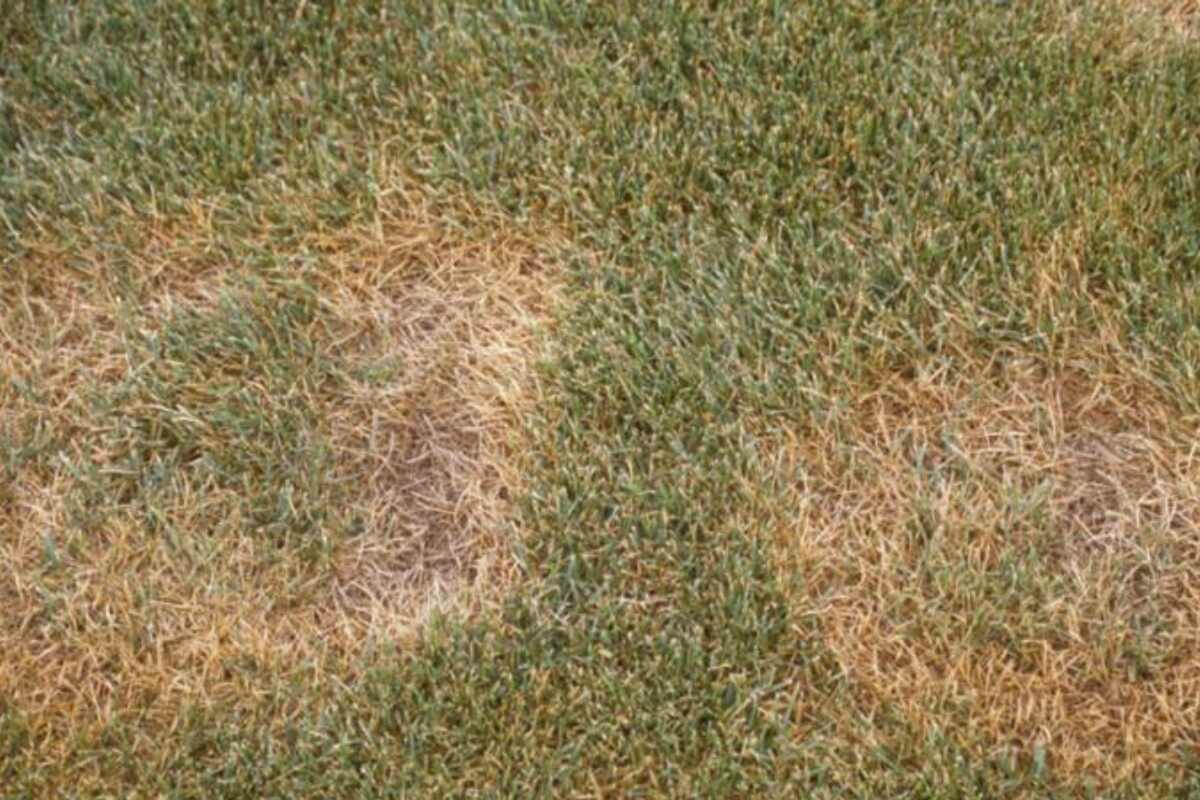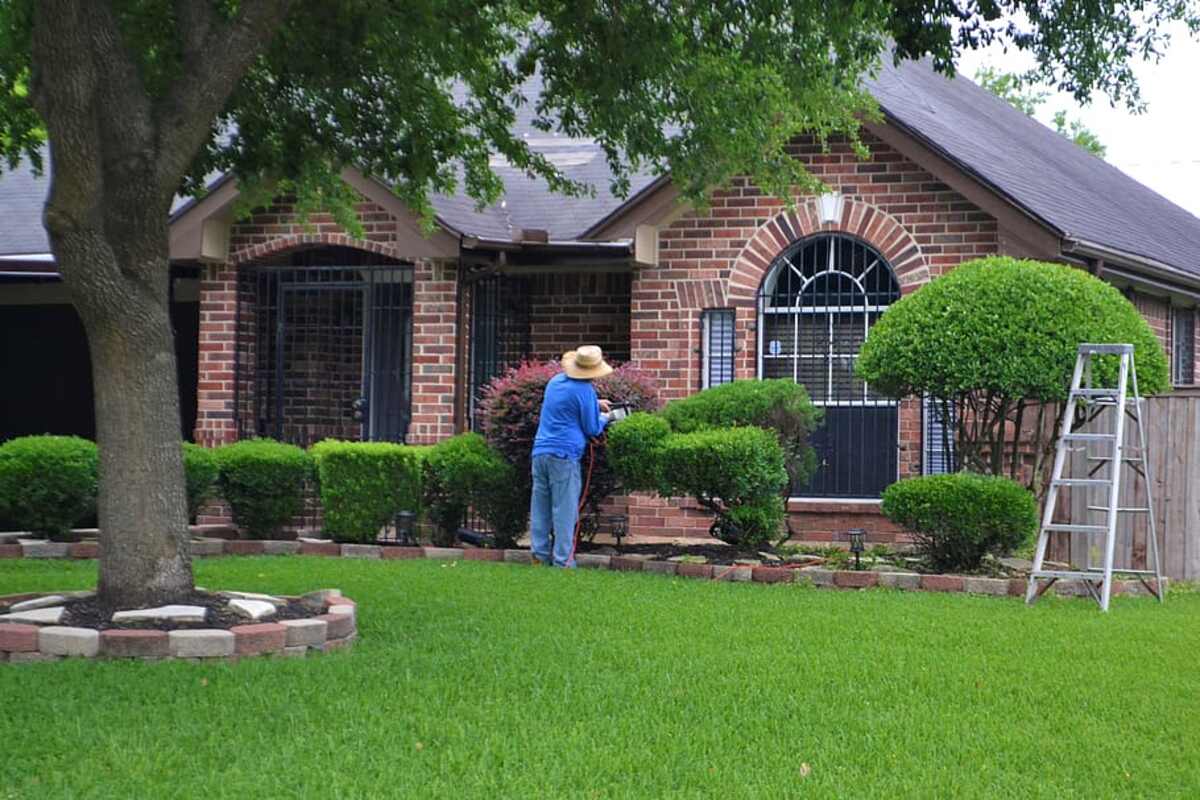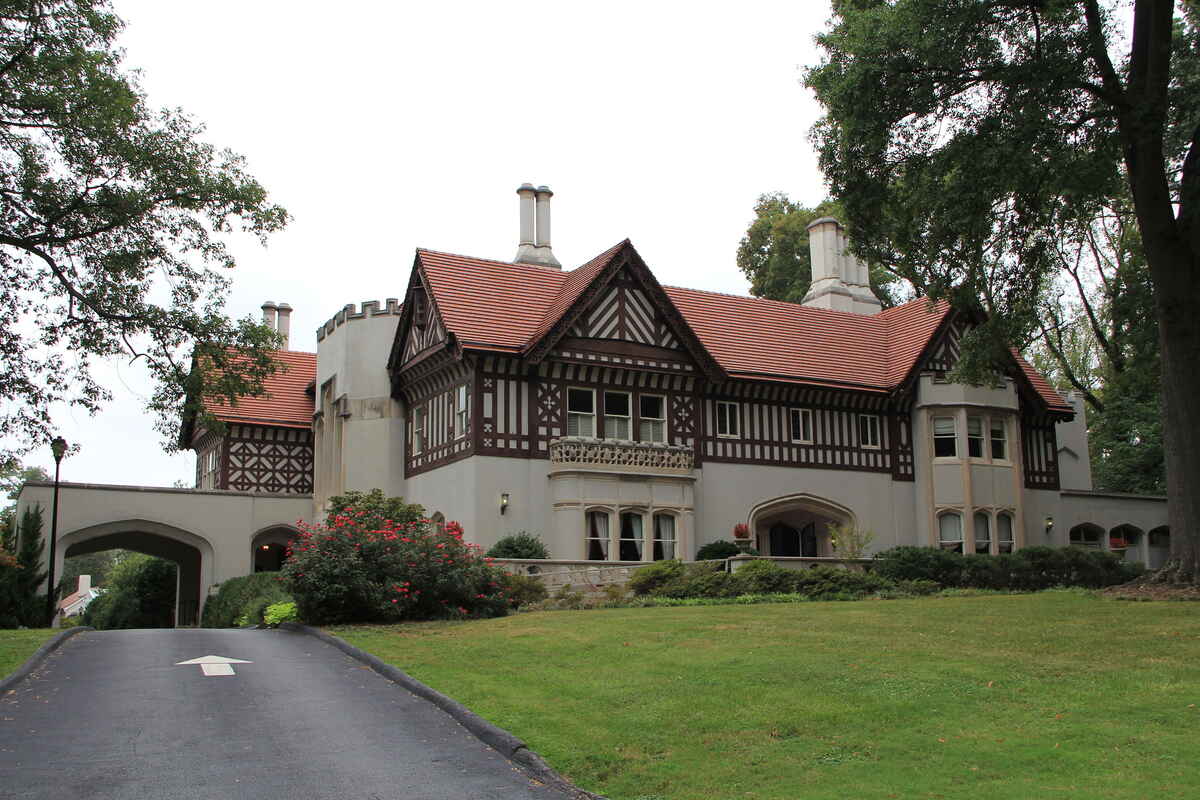
In Columbus, Ohio, we all know the saying, “If you don’t like the weather, wait a few minutes and it will change.” It’s true of Ohio summers, too. Ohio summers can be hot with temperatures reaching the 90s or even, rarely, the triple digits. Summers can be cool, like an extended spring or early fall. They can be drought dry or nearly monsoon wet, or they can be a wild roller coaster ride through all of the above. Flexibility is a virtue when it comes to lawn care in Columbus. You may have planned to mow, fertilize, or apply a lawn treatment, but if the weather has other plans, you’re the one who will have to adjust. Still, having general guidelines to follow is a good thing, weather permitting, of course.
Lawn Mowing
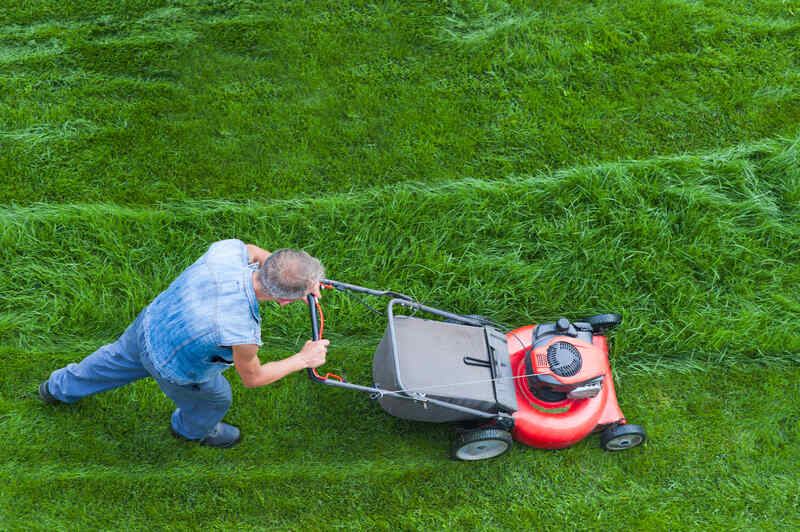
Photo Credit: timonko / Adobe Stock Free / License
Because temperatures during an Ohio summer can vary, becoming hot, cooling off a little, and then becoming hot again, it’s best to leave grass longer in the summer. Longer grass better retains soil moisture. Taller grass also sends out deeper roots which helps it find moisture as the soil dries. Set your mower to around 3”, or, as an easy rule of green thumb, just set your mower to its highest setting. For another suggestion that’s sure to be popular, mow less often during hot, dry spells. Your grass won’t be growing as fast when it’s stressed by heat and lack of water, anyway.
When you do mow, mow in the morning or evening, not in the heat of the day. That will stress your body and your grass, too. In addition, mow in a different direction each time you mow. If you always mow in the same direction, you not only create ruts in your yard but also cause your grass to begin to grow in the direction it has been mowed instead of standing straight up. When you have your lawn growing at 3” high, just take about the top third of the blade off with each subsequent mowing. Cutting your grass too low allows the soil to lose moisture and compact, and it allows the sun to warm the soil even more, both of which encourages weeds to germinate and grow.
Anther way to preserve soil moisture is to leave your clippings on your lawn. They not only preserve soil moisture but also add nutrients to the soil as they decompose. Mulching your clippings with a mulching mower or with mulching attachments helps your clippings decompose faster. Mow in a direction that sends your clippings back over the area you have already mowed. For the record, clippings do not contribute to thatch. Clippings lie near the top of your lawn and decompose quickly. Thatch builds up around the base of your grass. Some thatch helps retain soil moisture, but more than a ½” blocks air circulation, sunlight, and nutrient absorption.
Ohio’s summer showers and thunderstorms can disrupt your mowing while encouraging your grass to grow by what may seem to be several inches in one day. Still, you should avoid mowing when your grass is wet and clumped together for the same reason you should never mow your grass with a dull blade. The cut will be jagged, not clean, and that encourages pests and diseases to attack your lawn.
When you haven’t been able to mow thanks to several days of rain, your grass may have grown so high that you are cutting off more than just the top third of the blade. In that case, you may want to bag your clippings as you mow, or rake them up and remove them when you’re done, but add them to your compost instead of setting them out with the garbage and recycling.
Watering
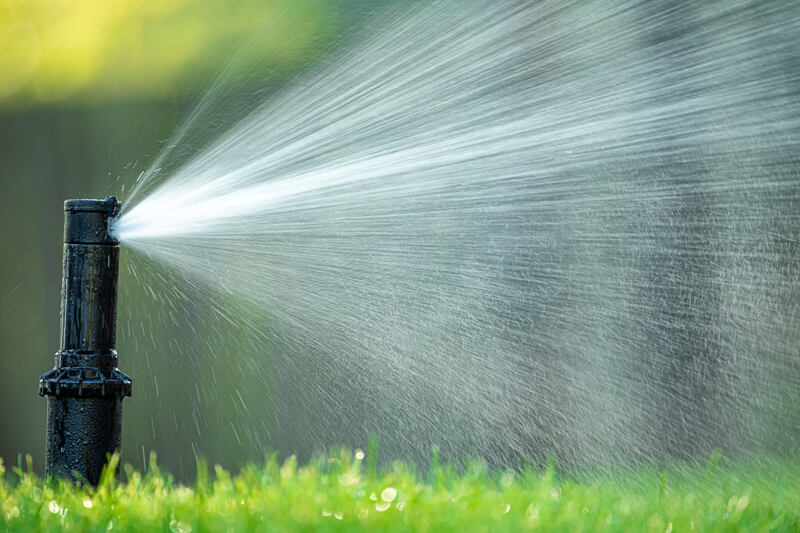
Photo Credit: maykal / Adobe Stock Free / License
Whether it comes from rain or watering, your lawn needs around 1” of water per week. Areas of your lawn that are in full sun for most of the day will need more water, and your entire lawn will need more water during dry spells. The best time to water your lawn is in the morning. That gives the water time to sink into the soil before the warmth of the sun can evaporate it. Watering in the evening doesn’t allow enough time for your lawn to dry out before nightfall which encourages diseases and fungus growth.
Keeping your lawn a bit dry also discourages disease and fungus growth while encouraging it to develop deeper roots as it searches for moisture. Deeper roots will help your lawn better recover from the hot dry spells and droughts that Ohio sometimes experiences. For those reasons, it’s better to water your lawn just two or three times a week rather than daily. Water on an irregular schedule rather than a regular one. Wait to water until your lawn begins to show signs of stress. If your lawn is losing its color and your footprints remain in the grass when you walk on it, it’s time to water.
Fertilizing
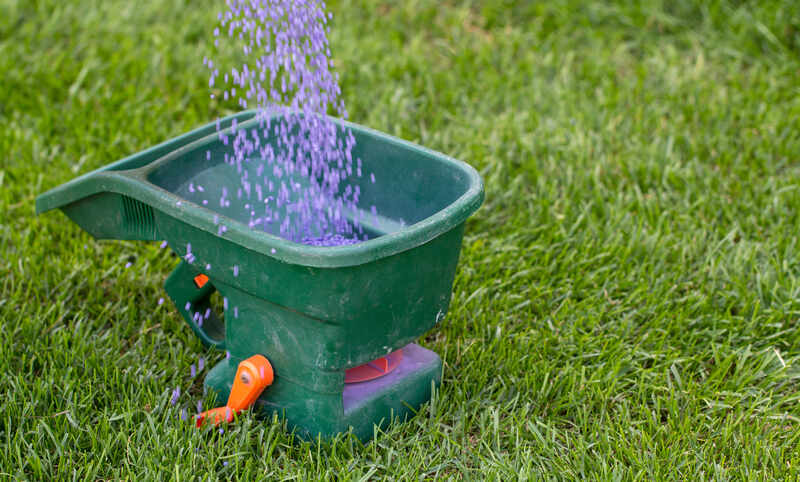
Photo Credit: maykal / Adobe Stock Free / License
It’s a good idea to have your soil tested every two to three years to make sure you are choosing the right fertilizer blend. Look for slow-releasing fertilizers with a well-balanced blend of 20 percent or 10 percent nitrogen, 20 percent or 10 percent phosphorous, and 20 percent or 10 percent potassium. Blends of 20-10-10 or 10-5-5 retain the necessary balance and can be substituted. They will achieve the same results.
You should stick to a schedule of applying fertilizer every eight to 10 weeks. If drought conditions arise, stay on schedule, but water your lawn thoroughly before applying the fertilizer to prevent fertilizer burn. Your lawn needs not only the nutrients provided by the fertilizer, but also the protection from grubs and insects. In early summer, apply a fertilizer that adds iron to improve color and that adds protection against broad leaf weeds. In late summer, apply a fertilizer with broad leaf control as needed to maintain your lawn’s color and sustain weed control.
Insects
When it comes to insects, Ohio lawns have two enemies – grubs and the hairy cinch bug.
Grubs
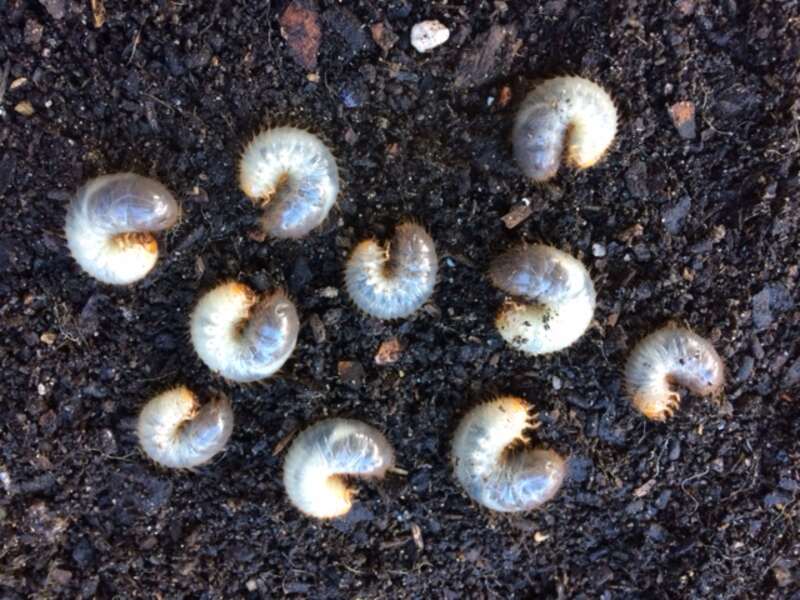
Photo Credit: Anna Gregory / Flickr / CC BY 2.0
Grubs are the larval form of several different species of beetle, but in Ohio, the culprit is probably the June bug. These small, creamy white creatures measure only about 1/2” to 1” long. When they are disturbed, they curl up into a C-shape, and they are often mistaken for worms. Look closely, though, and you’ll see that they have three pairs of legs. They live underground and feed on the roots of your lawn. Grub infestations peak in July and August, and that is the best time to eliminate them. The grubs are newly hatched, small, and busily eating.
While you are mowing, watering, or treating your lawn, inspect it for random, irregularly placed brown patches. Those are signs of a possible grub invasion. Try lifting up one of the patches. If it lifts up as easily as a throw rug, grubs may have caused it. To make the final determination, dig up 1 square-foot sections around your yard to a depth of 1” to 2” and look underneath. If you see more than five or six grubs per square-foot, the grub population is high enough to do serious damage.
Organic treatments you could try include Bacterial Milky Disease and applications of nematodes or Neem Oil. Tests of Bacterial Milky Disease, Bacillus popilliae Dutky, have found that it’s not as effective in Ohio as it has been in eastern states. Nematodes feast on grubs, though. While the grubs are still small, water your lawn, mix the nematodes with water, spray them onto your lawn, and then water again. Several brands contain the species Steinernema carpocapsae, but Heterorhabditis spp. seems to do a better job. If you decide to go with Neem Oil, just apply it with a sprayer as you water your grass.
To prevent grubs from ever starting an attack, apply chemicals such as Merit (imidacloprid) or MACH2 (halofenozide) in June or early July. Either of these will linger around to kill grubs appearing in late July through August.
Once grubs have damaged your lawn, you will need to eliminate them organically, chemically, or by hand before you can reseed successfully. If a large area has been damaged, using a slice seeder to place the grass seed directly into the ground might be the best option. Water daily for three weeks so that the newly planted seed germinates, and mow to keep your established grass from casting too much shade on the seedlings. Otherwise, just over seed the damaged patches.
The Hairy Cinch Bug
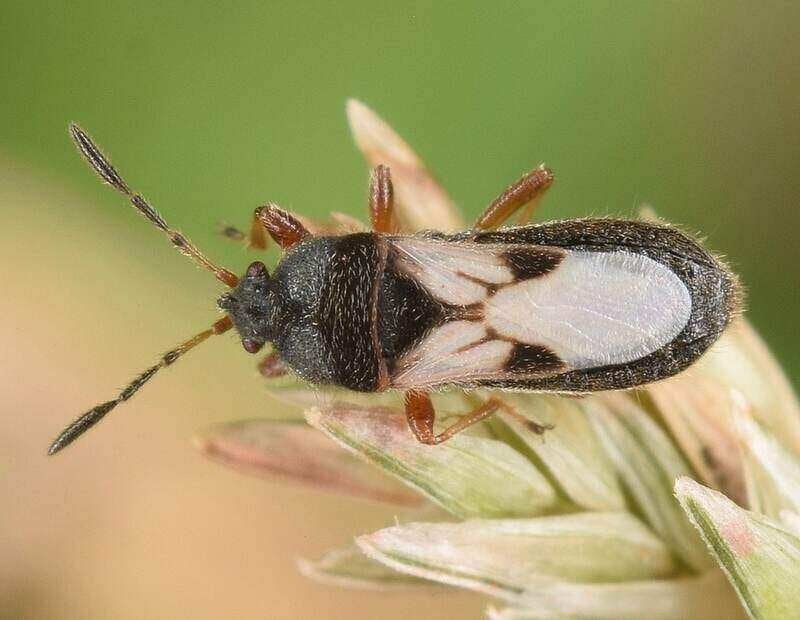
Photo Credit: Christina Butler / Wikimedia Commons / CC BY 2.0 / Rotated
The hairy cinch bug loves Ohio because it loves all the grasses usually planted in Ohio lawns – Kentucky bluegrass, perennial rye grass, and fine fescue. They also prefer basking in the hot, dry areas of your lawn. Lawns damaged by cinch bugs will have irregular patches that first turn yellow and then straw-colored. Unfortunately, your entire yard might look that way during one of those extended hot, dry spells that Ohio can experience from June through September, especially if there’s a ban on watering. Those are also the months when cinch bugs are active. Areas damaged by cinch bugs won’t recover after watering, though. Instead, those damaged areas will expand as the cinch bugs move out in search of more food.
Cinch bugs lurk in the thatch and around the crown of your grass. It’s hard to spot them and get an idea of how serious your infestation is because cinch bugs are very sensitive to vibration. They scatter when they feel footsteps approaching. If you have damaged patches, you can search near those patches in the early morning by looking among the blades of grass or dragging your foot through the grass and watching for any cinch bugs that might run over your shoe.
The flotation method is the easiest way to determine how serious your cinch bug problem might be. Remove the top and bottom from a large coffee can. Twist the can down into the ground. Fill it with water and count the number of cinch bugs and cinch bug nymphs that appear floating on the water for the next 10 minutes. Refill the can if the water drains out before the 10 minutes is over. Finding 10 to 15 adult cinch bugs in a one square-foot space signals treatment should begin, but damage already could be occurring at that point.
Watering your lawn before summer begins discourages cinch bug infestations. While the hairs on the adult cinch bugs shed water droplets, the nymphs are more fragile and suffer damage from large water droplets. Cinch bugs also are susceptible to a fungus, Beauveria spp., and watering in the spring and early summer encourages the presence of that fungus. Cinch bugs are easier to spot on freshly laid turf than in established grass. If you notice them on turf, target an application of insecticide to that area, but do not apply insecticide to your lawn unless you have determined that cinch bugs are present.
If your lawn has been only lightly damaged by cinch bugs, it will recover with watering. However, if the damage is more extensive, reseeding is needed. Unfortunately, as already mentioned, extensive cinch bug damage shows up during hot weather, which is also the type of weather weeds, especially crabgrass, love. So, as you water to encourage the grass seed to germinate, take steps to discourage sprouting crabgrass. Because cinch bugs reside in your lawn’s thatch, don’t water in applications of liquid pesticides. Check the instructions on granular pesticides because these may require watering for activation.
Weeds
As we all know, dandelions and crabgrass are the two most common and most hated weeds around Columbus. The grass in thick, healthy lawns easily shoves weeds aside.
Dandelions
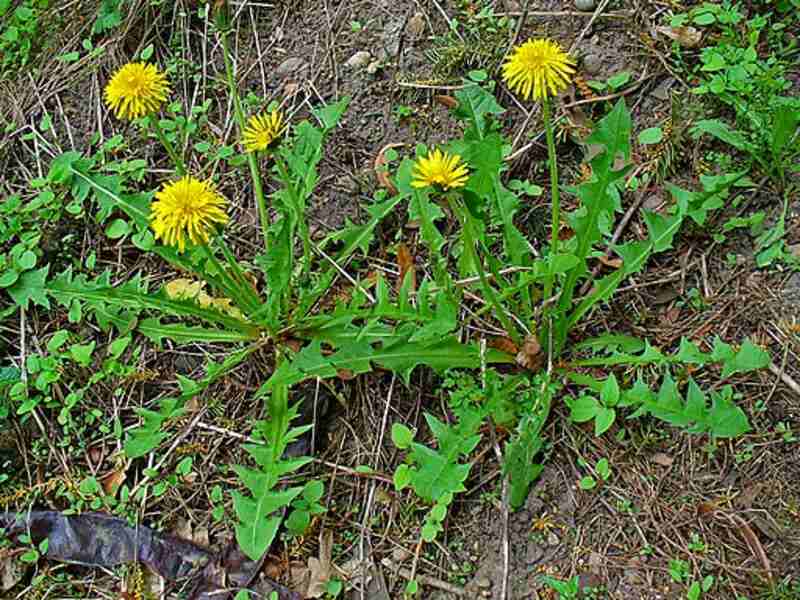
Photo Credit: H. Zell / Wikimedia Commons / CC BY-SA 3.0
The grass in thick, healthy lawns easily shoves weeds aside, but dandelions are persistent and aided by all of the almost weightless seeds in those white puffballs. Broadleaf weed killers effectively eliminate dandelions, but use a spot application on a calm day to avoid getting the herbicide on other broadleaf plants such as tomatoes.
If you prefer an organic approach, wait until after a heavy rain or water around the dandelion. Remove the puffball if one has formed, gather the leaves in one hand and grasp the plant close to the root. Use a weed knife to loosen the soil around the root until you feel the plant start to give, and pull it from the ground, root and all. Be certain that you have the entire root, or the plant will simply sprout again.
Crabgrass
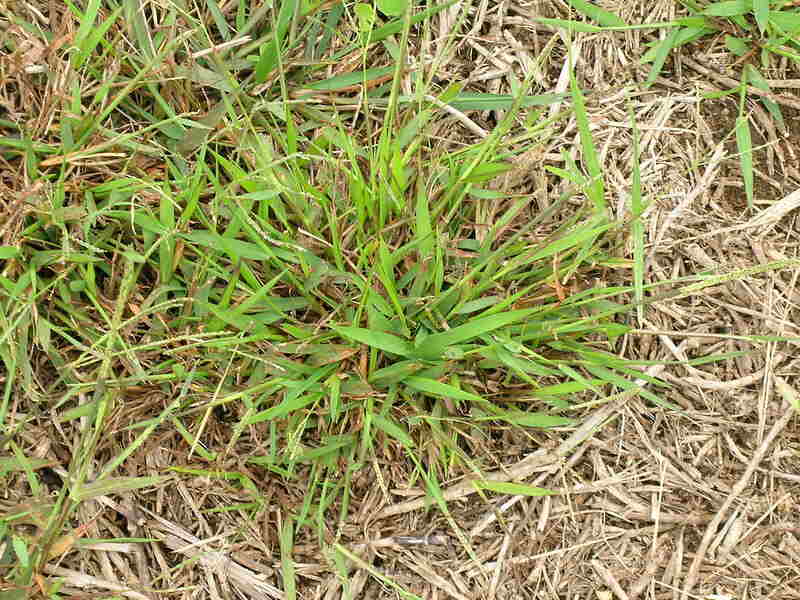
Photo Credit: Harry Rose / Flickr / CC BY 2.0
While most people can identify a dandelion, many can’t identity other weeds. Crabgrass appears in May and grows in full sun, not shade. Its stems grow close to the ground and sprawl out like the legs of a crab. It will be a lighter green than the surrounding grass. If you had crabgrass the year before, you’ll have it again the next year. It can be prevented with a pre-emergent herbicide. The best time to apply crabgrass preventer is between late March and early April. If the crabgrass plant hasn’t attained more than three or four leaves, spot apply a post-herbicide such as ACCLAIM if you only have a few plants scattered around your lawn. If you have a large growth of crabgrass in one area, you could apply an herbicide and reseed your lawn. However, if you have a large area of crabgrass, especially if the plants have matured, you might prefer to leave it alone rather than have a large area of dead grass in your yard. The crabgrass will die with the first hard frost. You can over seed the area early in the fall and apply a pre-emergent in the spring.
Organic approaches include pulling up plants after a rain or applying corn gluten as a pre-emergent.
If you have any lawn care questions or if you have lawn care tips for other Columbus area homeowners, please share your thoughts in our comment section below. Or visit our Columbus lawn care page.
Photo Credit: Ohio State House in Columbus, Ohio / Warren LeMay / Flickr / CC0 1.0


